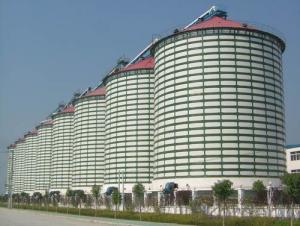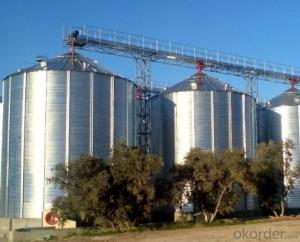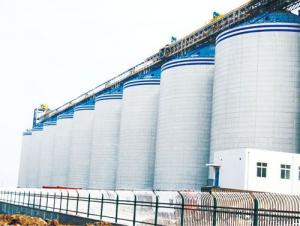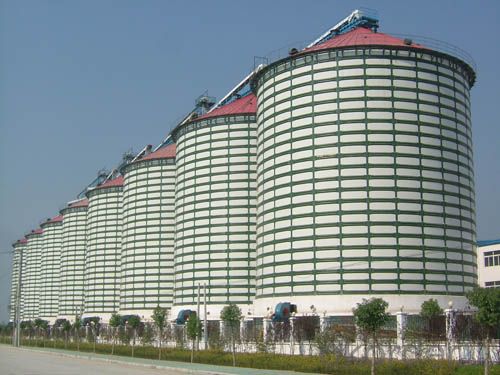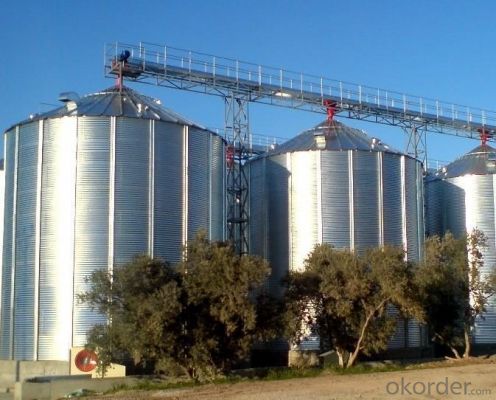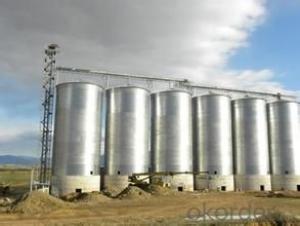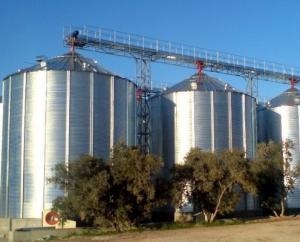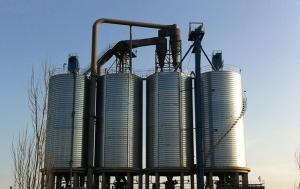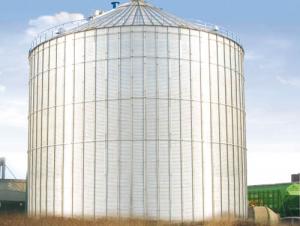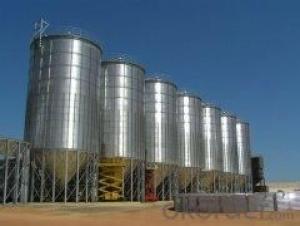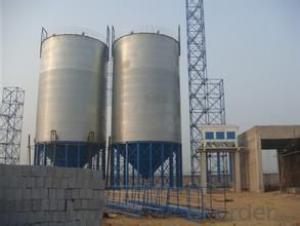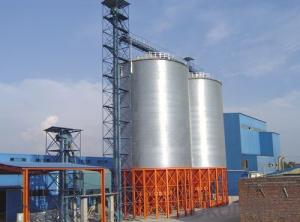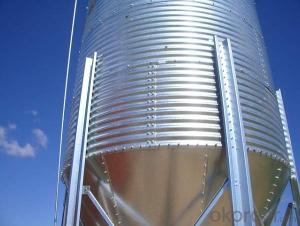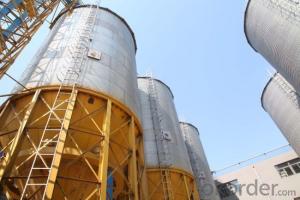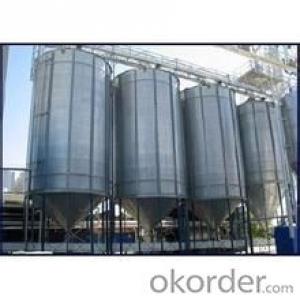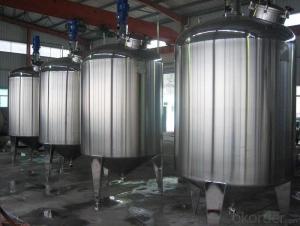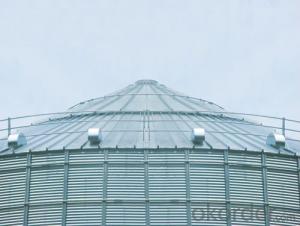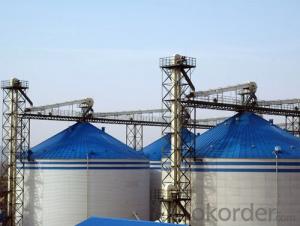Petant Design Malt Strage Silo with Factory Direct Price
- Loading Port:
- Tianjin
- Payment Terms:
- TT OR LC
- Min Order Qty:
- 1 set
- Supply Capability:
- 100 set/month
OKorder Service Pledge
OKorder Financial Service
You Might Also Like
Petant Design Malt Strage Silo with Factory Direct Price
Main Features for Malt Storage Silo
Details | Materials | Quality Standard | Features |
Body Plate | By Hot Dip Galvanized Steel Plate, 275-600g/m2 Galvanization | China National Standard with Quality Report | Corrugated Our Corrugated Steel Plate Production Line is IMPORTED |
Bolts and Screws
| Hot Dip Galvanized, Taiwan Imported, Strengthened, Max Sealing | Quality Strength Report | Imported from Taiwan |
Enforcement Rib Stiffeners
| Sidewall stiffeners are manufactured from min. 350 N/mm² tensile high strength steel with zinc coating of 275 g/m². This type of stiffeners easily transit the vertical loads during loading or unloading, environment loads of the silo. | China National Standard with Quality Report | Can be inside or outside rib Rigorous calculation to meet full silo strength safety |
Wind Ring
| Hot Dip Galvanized For additional support for higher wind areas, the wind ring is attached directly to the stiffeners. The rings strengthen the silo providing reinforcement against damaging wind. | China National Standard with Quality Report | Rigorous calculation to meet the anti-wind needs for sea port area or windy area |
Manhole
| A standard manhole door is located in the second ring of the silo. Double size door with strong frame and block system | China National Standard with Quality Report | Easy for the ascendant to inspect and maintenance, ensure the safety of the silo. |
Stairs
| SRON offers both ladders and stairs as outside climbing options. Stairs offer a shallow 8” step that decreases the incline angle for an easier, safer, and more comfortable climb. | China National Standard with Quality Report | Can be installed inside and outside of the silo, Easy for the ascendant to inspect and maintenance, ensure the safety of the silo. |
Inside Ladder
| Ladder inside silo, simple vertical or cage type ladder are available for your choice | China National Standard with Quality Report |
Detail Asseccory for Malt Storage Silo
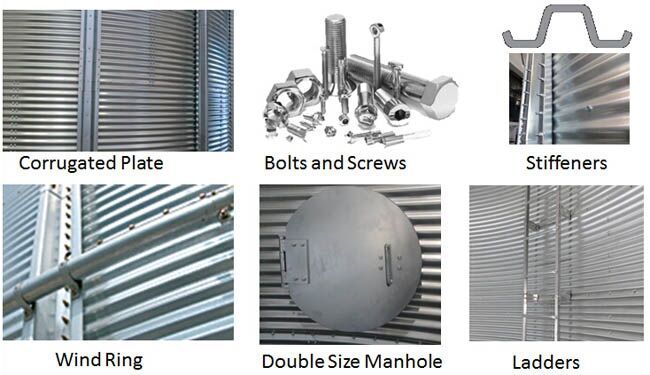
Structure for Malt Storage Silo
Galvanized Coating: 275-600g/m2
Bottom Type: Flat or Hopper Type
Gas-tightness: Perfect Gas-tightness
Auxillary System:Drying,Cleaning,Dedusting,Lifting and Conveying
Monitoring System: Temperature and Moisture Supervision SIMENS PLC
Silo Life: 25-40 Years
Installation and Debugging: Engineers Sevice Overseas for Transportable Silo
Picture:
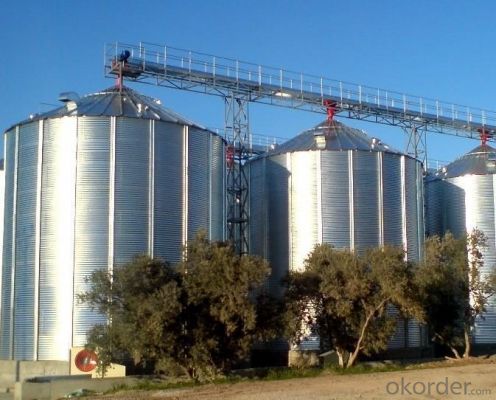
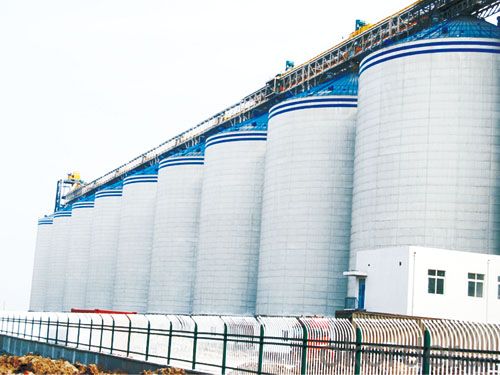
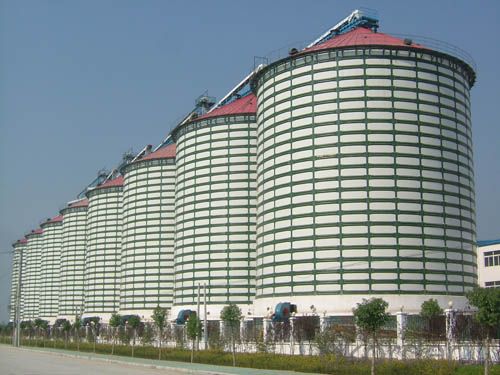
- Q: the volume of a silo that is 18' 6 and 52'?
- Volume of a cylinder is pi*r^2 * h 3.14 * 9'3^2 * 52
- Q: The top of a silo has the shape of a hemisphere of diameter 20 ft. If it is coated uniformly with a layer of ice and if the thickness is decreaing at a rate of 1/4 in/hr, how fast is the volume of the ice changing when the ice is 2 inches thick?A ship is steaming due north at 12 knots (1 knot = 1.85 kilometers/hour) and sights a large tanker 3 kilometers away northwest steaming at 15 knots due east. For safety reasons, the ship wants to maintain a distance of atleast 100 meters between them. Determine the shortest distance between the ships to determine if they can remain on their current headings or need to change course.A water tank has the shape of an inverted right circularcone of altitude 12 feet and base radius 6 feet. If water is being pumpedinto the tank at a rate of 10 gal/min. Approximate the rate at which the water level is rising when the water is 3 feet deep (1 gal= .1337ft^3).These three have stumped me. Any ideas would be appreciated! Thanks!!
- 1. volume of hemisphere is V = 2pi/3 r^3 dV/dt = 2pi r^2 dr/dt = 2pi * 2^2 * 1/4 = 2pi in^3/hr (volume change rate) 2. let the intersecting point of their current path be O(0,0), the two ships current coordinate is (0,3000/sqrt(2)) and (-3000/sqrt(2),0) assuming the ship due north has a coordinate of y, and the other x, y = 12 * 1850 t - 3000/sqrt(2) = 22200 t - 3000/sqrt(2) (in m /hr), x = 15 * 1850 t - 3000/sqrt(2) = 27750 t - (3000/sqrt(2)) t is the time from the current moment the distance between the two is d = sqrt(x^2 + y^2) which gives you a function of t take the derivative of d over t and find its minimum, if the minimum is greater than 100, it's safe it can be found that the shortest distance between the two ships is 5 minutes later when they are about 330 m apart so it's safe
- Q: What is the opposite of tall buildings?
- short small buildings
- Q: Why not just spider web. Are there so many spider webs in the corn cob pile in the silo/barn? That it got this name?
- No...nothing to do with corn. The word came from another (cobbe) that was used over 700 years ago: Origin: 1275–1325; Middle English coppeweb, derivative of Old English -coppe spider (in ātorcoppe poison spider); cognate with Middle Dutch koppe; see web
- Q: A silo is a composite shape of a cylinder and a pyramid. If the silo is filled completely, what is its total storage capacity if the height is 60 feet and the cone-shaped portion has a height and radius of 15 feet? (Note: The height of the silo is 60 feet which is the combined height of the pyramid and the cylinder.)How do I do this problem?
- The formula for volume of a cylinder is pi x (radius squared) x height The formula for volume of a cone is pi x (radius squared) x height/3 So for the cone you have 3.14159 x (15 x 15) x 15/3 The radius of the cylinder part should also be 15, the height of the cylinder part is (60 - 15) = 45 so the volume is 3.14159 x (15 x 15) x 45 You should be able to get it from here...
- Q: A cylindrical silo with a semi-sphere for a lid--volume equals 484pi ft3. What is the radius and height? ---USING THE LEAST AMOUNT OF MATERIAL. Please help...I already know A=2*pi*r*h+2*pi*r2 and V=pi*r2*h+2/3*pi3
- The radius is 4 and the height is 7.
- Q: Hi..can someone answer this question step by step so i can understand how to do it?...it is decided to investigate the manufacture of a silo capable of of holding 10 000 m^3 of grain. The silo must be in the shape of a cylinder with a hemispherical roof. The grain is stored only in the cylindrical part, not in the roof (hemisphere section). The hemispherical roof costs twice as much per square metre to manufacture as the cylindrical part. What dimensions should the silo have in order to minimise the costs of manufacture?...the dimensions are 'r' (radius of cylinder) and 'h' (height of cylinder)...10 POINTS FOR BEST ANSWER...all answers are appreciated...thanks
- Let: V - grain volume a - cost to build 1 sq.m of cylindrical part Volume of cylindrical part is: pi*r^2*h = V So h = V / (pi*r^2) Total cost to build the silo is: Cost = pi*r^2*a (bottom of the silo) + 2*pi*r*h*a + 2*pi*r^2*2a (semi-spherical part cost twice) = = a*(5*pi*r^2 + 2*pi*r*h) = = a*(5*pi*r^2 + 2*pi*r*V / (pi*r^2)) = = a*(5*pi*r^2 + 2*V/r) You need to find minimum of the function dCost/dr = a*(10*pi*r - 2*V / r^2) = 0 r = (V/(5*pi)) ^ (1/3) = ... h = V / (pi*r^2) = ...
- Q: I'm wondering why they are built so tall and narrow. Does the packing of the contents under their own weight somehow prevent spoilage? I can't imagine storage space is at all that much of a premium on farms ...
- The answer is to do with the way they have to be emptied under gravity. There is a cone at the bottom whose sides have an inclination angle (from the horizontal) greater than the angle of rest of the bulk grain. Hence a tall thin silo can be properly emptied whereas a short fat one could not (by gravity).
- Q: They're huge containers with little things inside. Notorious for catching on fire. I seriously forgot what they were. They're usually in rural areas.
- Do you mean silos that hold silage?
- Q: Grain that is stored ina grain elevator is unreactive. If a spark is placed near fine dust in the silos, howevr, an explosive reaction will occur.
- I guess you're asking why this is so. Or are you asking is this so? If you are looking for answers you really ought to start by asking unambiguous questions. I'll answer both possibilities. It is so. Big bangs can come from ignited grain dust in silos. Grew up in farm country with lots of soya bean and corn silos around. Occasionally one would go boom and ruin the farmer's day. As to why the dust will go boom, but the grain lying in a pile will not; it's because the dust is surrounded by air with oxygen in it, while the grain is exposed only on the top of the pile. In fact the surface area of dust relative to the volume (mass) of the dust is rho = A/V = 4 pi r^2/4/3 pi r^3 = 3/r This means that as the bit to burn gets smaller and smaller when r gets smaller and smaller, there is relatively more surface area exposed to the air and the oxygen it contains. And the more surface area there is relative to the mass (volume) of the bit, the more rapid it will burn. The very rapid burns are called explosions. So if grain were to ignite, it would burn more slowly than the dust with its higher A/V ratio. We used to have those, too; slow burns in the silos.
Send your message to us
Petant Design Malt Strage Silo with Factory Direct Price
- Loading Port:
- Tianjin
- Payment Terms:
- TT OR LC
- Min Order Qty:
- 1 set
- Supply Capability:
- 100 set/month
OKorder Service Pledge
OKorder Financial Service
Similar products
Hot products
Hot Searches
